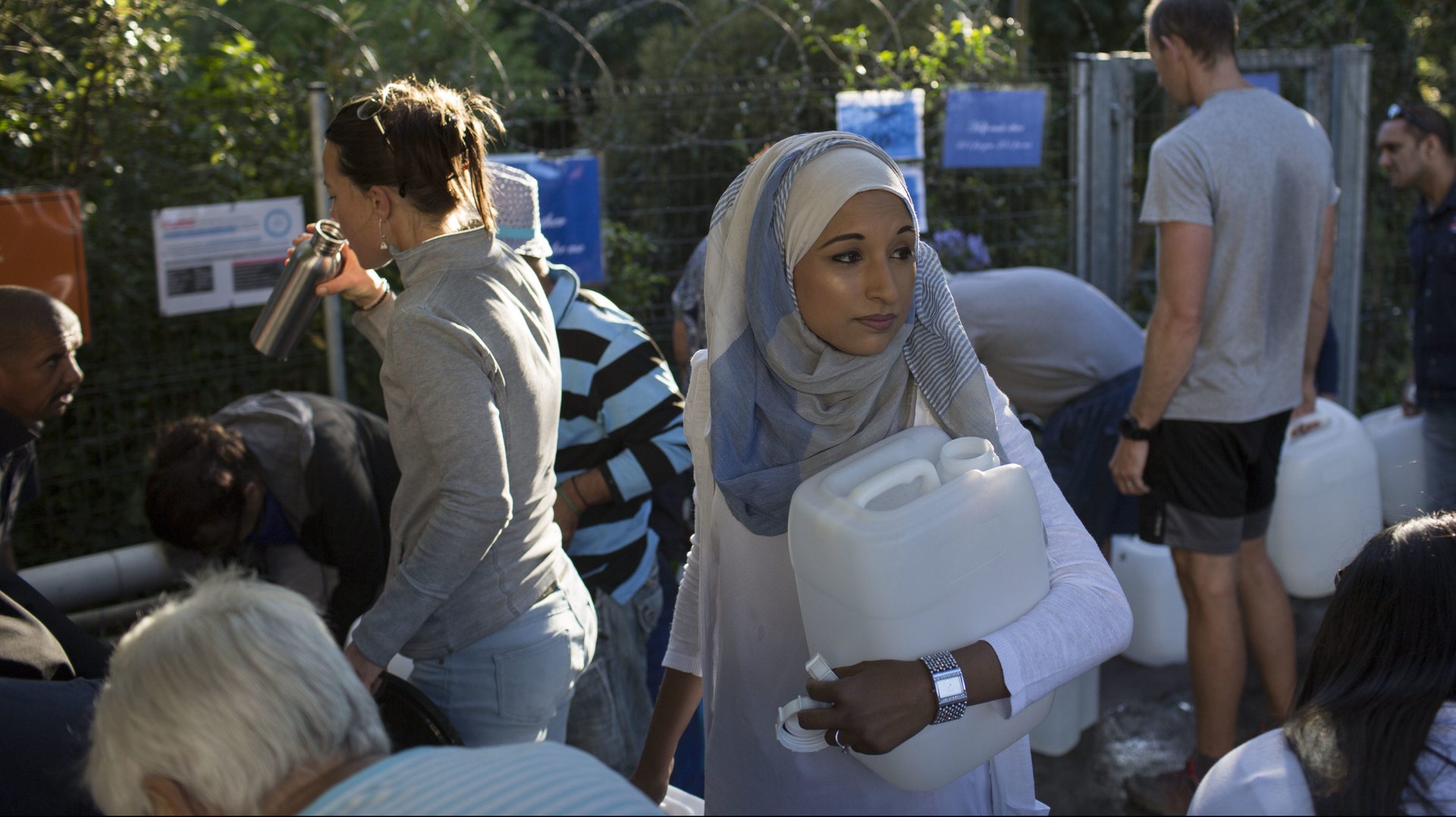All the ways that South African women have changed their beauty routines to save water
The reservoirs of South Africa’s second-largest city, Cape Town, are almost empty. Four million residents are at serious risk of being without running water by July—ominously dubbed Day Zero by South African politicians. The original date was pushed back from April due to successful conservation efforts by locals of Capetonians—from harvesting rain water for gardening to a complete ban on washing paved areas with drinkable water.


The reservoirs of South Africa’s second-largest city, Cape Town, are almost empty. Four million residents are at serious risk of being without running water by July—ominously dubbed Day Zero by South African politicians. The original date was pushed back from April due to successful conservation efforts by locals of Capetonians—from harvesting rain water for gardening to a complete ban on washing paved areas with drinkable water.
These conservation efforts have also, unsurprisingly, impacted the beauty routines of Cape Town residents. As recently reported by Glamour, the women of Cape Town have had to adjust their self-care and grooming practices to save precious water, and these new lifestyles—beyond just how often they take a bath—have affected the way locals do their hair and makeup.
The water-conserving practices, however, aren’t just for people living in areas affected as seriously by drought. California, which declared an end to its five-year drought last year, is at risk again due to a shortage of winter rain water. We’re facing a global water crisis, and these drastic lifestyle changes by the women of Cape Town are a reminder that the consequences of climate change aren’t so distant and vague. Which means even in water-rich regions, these types of self-care modifications could easily be embraced by all women—at least part of the time.
They’re wearing less makeup for less face washing.
27-year-old Jessica Da Silva told Glamour that she is wearing fewer cosmetics products so that she doesn’t have to wash her face every night. (Note: dermatologists absolutely recommend that you regularly wash your face if you wear any products, even sunscreen, on your face.) Da Silva used to wear foundation, eyeliner, mascara, lipstick and more on a daily basis—now she goes without. On days that she has to wear makeup, she uses face wipes or toner to take it off. (The Glamour story also notes that micellar water, a suspension of oil molecules in water that cleanses skin and removes makeup without soap and water, is a popular alternative.)
They’re using more dry shampoo.
Cape Town is a diverse city of many hair textures and types. What is low maintenance for one woman may be high maintenance for another. Some women, like Shahnaaz Abrahams Samsodien, have given up their long hair for shorter cuts, which require less water to keep clean. Other women are embracing their natural kinky or curly hair. But what’s similar across hair types is that women are taking fewer showers—Samsodien is used to take two showers a day; now she takes one, using 2-in-1 shampoo and conditioner, and only after her one-year-old son takes his bath first. Da Silva showers twice a week at most, and uses dry shampoo in the meantime.
They’re coordinating their workouts with their wash schedules.
Sitaara Stodel no longer goes to the gym in the evenings, because many fitness facilities have shut off their taps for post-workout showers. So now, she coordinates her gym time with her morning shower.
They’re not shaving their legs.
“I don’t know a single woman out of my friend group who still shaves her legs,” 26-year-old Julia Sullivan told Glamour. “Some people wax if they did that before, but most of my female friends have hairy legs.” When she does shave her legs, she reuses dirty shower water.
They’re experimenting with different hairstyles.
Samsodien is Muslim, but she did not wear headscarves very often before the drought. Now, without frequent showering, she wears them regularly. “For me, [wearing a scarf] is more of a necessity than it is a religious thing,” she told Glamour. In addition to shorter haircuts and more natural hair textures, women are wearing braids and buns to hide the second and third days of not washing their hair.
They’ve switched to liquid soap.
According to a 2009 study on environmental footprints of homecare products published by the American Chemical Society, people use more water when they wash with bar soap. That said, bar soap is usually considered more environmentally-friendly, as it comes with minimal packaging and takes less energy than liquid soap to produce. But it all depends on what you prioritize; for Cape Town, water conservation comes first.